
Stratford is a town in East London, England, in the London Borough of Newham. Part of the Lower Lea Valley, it is 6 miles (9.7 km) northeast of Charing Cross, and includes Maryland and East Village.
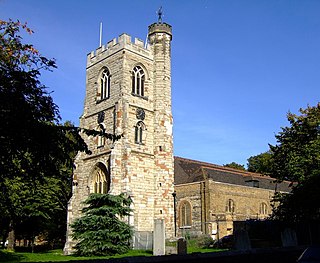
West Ham is a district in East London, England and is in the London Borough of Newham. It is an inner-city suburb located 6.1 mi (9.8 km) east of Charing Cross.
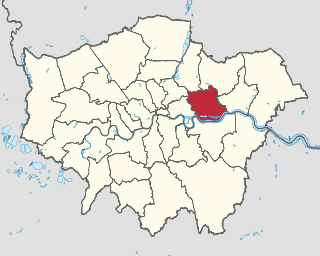
The London Borough of Newham is a London borough created in 1965 by the London Government Act 1963. It covers an area previously administered by the Essex county boroughs of West Ham and East Ham, authorities that were both abolished by the same act. The name Newham reflects its creation and combines the compass points of the old borough names. Situated in the Inner London part of East London, Newham has a population of 387,576, which is the fourth highest of the London boroughs and also makes it the 26th most populous district in England. The local authority is Newham London Borough Council.
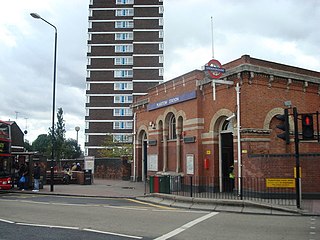
Plaistow is a suburban area of East London, England, within the London Borough of Newham. It adjoins Upton Park to the north, East Ham to the east, Beckton to the south, Canning Town to the south-west and West Ham to the west.

Upton Park is an area of the East London borough of Newham, centred on Green Street which is the boundary between West Ham and East Ham. West Ham United Football Club formerly played at the Boleyn Ground, commonly known as Upton Park.

West Ham was a local government district in the extreme south west of Essex from 1886 to 1965, forming part of the built-up area of London, although outside the County of London. It was immediately north of the River Thames and east of the River Lea.

Newham Sixth Form College (NewVIc) is a sixth form college located in the East London borough of Newham. Situated on a single site in Plaistow, the college was established in 1992 to provide for students in Newham and neighbouring boroughs who opt to stay in education beyond GCSE O-levels. It is designed for students ages 16 to 19 and its curriculum includes A-levels as well as specialist pathway, levels 2 and 3 vocational, foundation level and ESOL programmes. There are currently about 2,500 students at the college.

Custom House is an area in the London Borough of Newham, in East London, England.

St Bonaventure's is a Roman Catholic boys' secondary school located in the Forest Gate area in London, England. Founded in 1875, the school has a long history of providing education to boys in the local community.
Lister Community School is a co-educational secondary school located at St Mary's Road, Plaistow, Newham, London.
Forest Gate Community School is a coeducational secondary school in Forest Gate, located in the London Borough of Newham, rated Outstanding by Ofsted in February 2020 for the second time. It was first rated Outstanding in 2016. The school was extended from eight forms of entry to ten – rising to a total of 1,350 pupils – starting with the Year 7 admission in September 2019 to meet demand. The school was ranked in the top 50 in the country for progress in GCSE results in 2016, 2017, 2018, 2019 and 2020. In 2017, disadvantaged students made progress over 1 grade higher than the national average, source Department for Education. The school was ranked 33rd in the country for progress scores for disadvantaged students in 2019. The school has the best progress 8 for Newham for secondary students for 2018 and 2019. In 2020, the school was named School of the Year by World Class Schools.
Stratford School is a secondary academy school in Forest Gate in the London Borough of Newham, England. It has no sixth form.
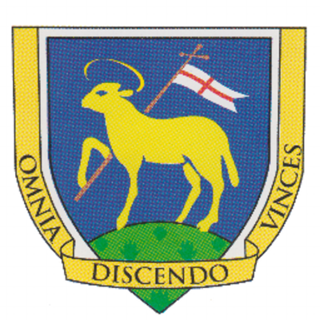
Hendon School is a mixed secondary school in Golders Rise, Hendon, with academy status since November 2011 in the London Borough of Barnet.
Royal Docks Academy is a coeducational secondary school located in Custom House within the London Borough of Newham, England. It does not have a sixth form.
Langdon Academy is a mixed all-through school with academy status, located on Sussex Road, East Ham in the London Borough of Newham, England.
Cumberland Community School is a coeducational secondary school located in the London Borough of Newham, England. There are 300 pupils in each year. It is on Oban Close off Prince Regent Lane close to its junction with Newham Way and has substantial land, sharing facilities with neighbouring Newham Leisure Centre. It is built on the site of the former Woodside Community School.
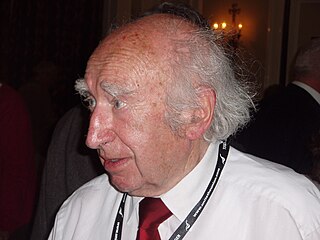
Frederick Frank Jarvis CBE was a British trade union leader. He was President of the National Union of Students (NUS) from 1952 to 1954 and General Secretary of the National Union of Teachers (NUT) from 1975 to 1989. Jarvis served as President of the Trades Union Congress in 1987, the first Oxford graduate to hold that position.

Elections to Newham London Borough Council in London, England was held on 6 May 2010. This was on the same day as other local elections and the general election to the UK Parliament.

The 2014 Newham London Borough Council election took place on 22 May 2014 to elect members of Newham London Borough Council in England. This was on the same day as other local elections.












